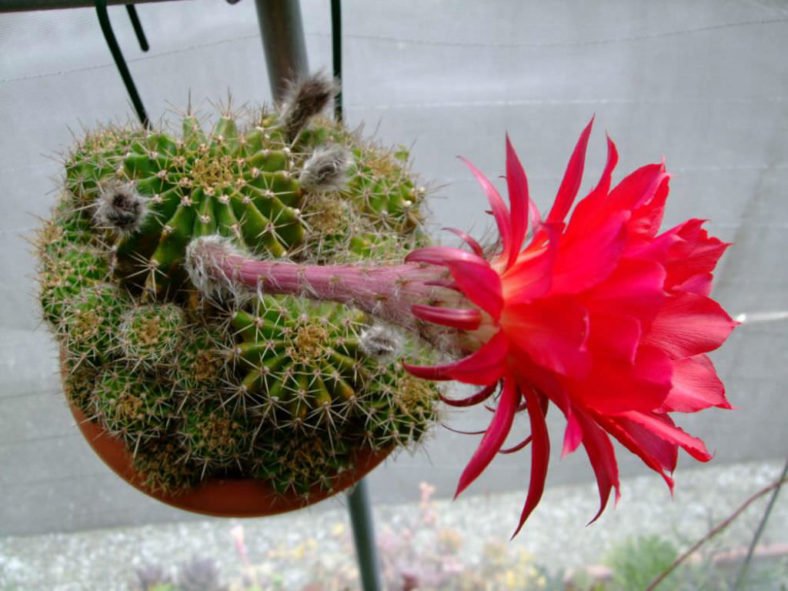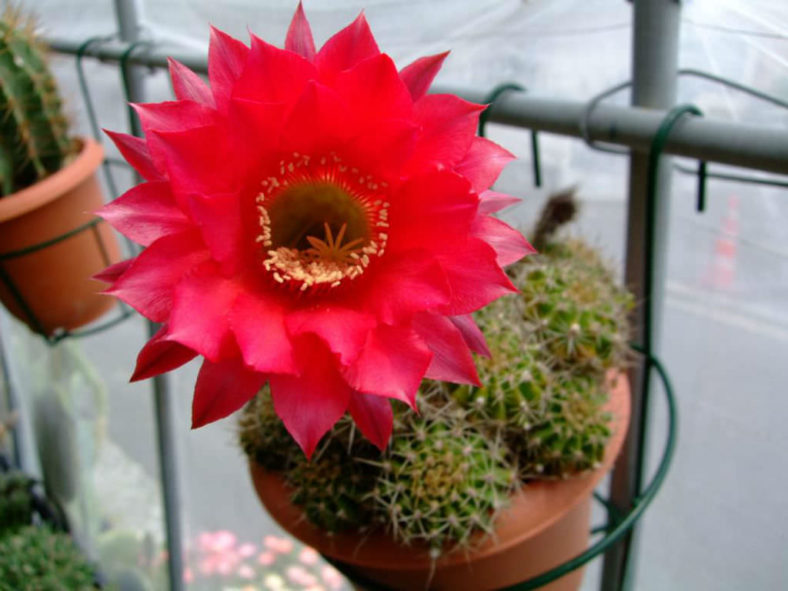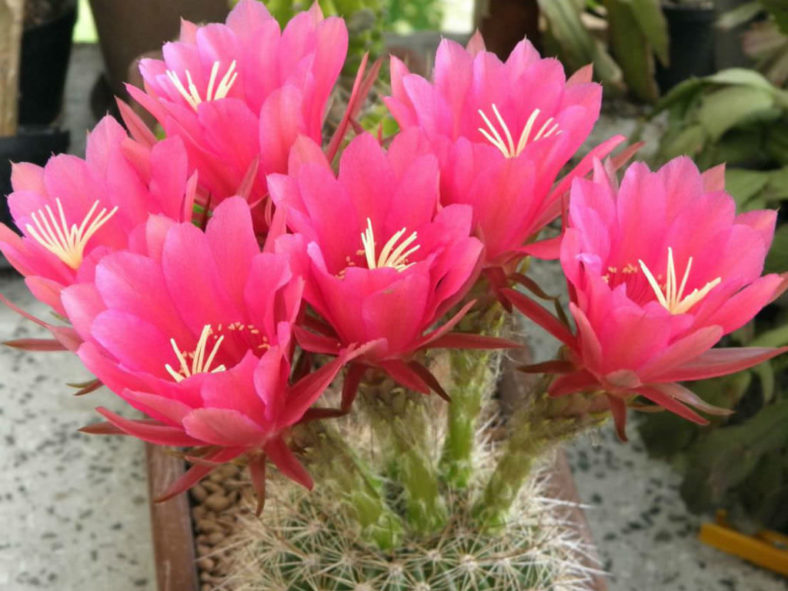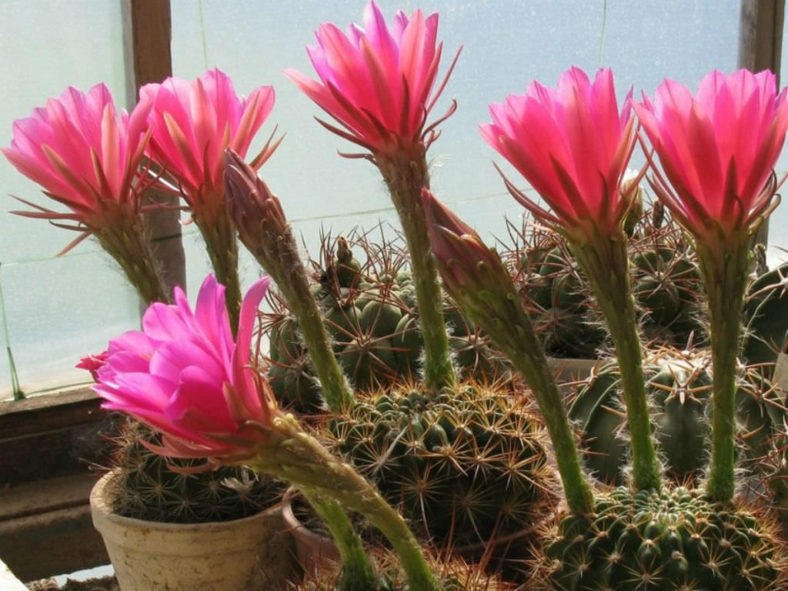Scientific Name
Echinopsis mamillosa var. kermesina (Krainz) Friedrich
Accepted Scientific Name
Echinopsis mamillosa Gürkey
Synonym(s)
Echinopsis kermesina, Pseudolobivia kermesina
Scientific Classification
Family: Cactaceae
Subfamily: Cactoideae
Tribe: Trichocereeae
Genus: Echinopsis
Etymology
The varietal epithet "kermesina" (pronounced "ker-mes-SY-nuh") means "crimson-colored" and refers to the striking flowers of this variety.
Origin
Echinopsis mamillosa var. kermesina is native to Bolivia (Tarija). It is not accepted as a separate variety and is treated as a synonym of Echinopsis mamillosa subsp. mamillosa.
Description
Echinopsis mamillosa var. kermesina is a small cactus with a solitary, dark green, spherical stem that has 13 to 17 deep ribs divided into tubercles. The stem can grow up to 12 inches (30 cm) tall and 10 inches (25 cm) in diameter. The tubercles are tipped with rounded areoles spaced up to 0.5 inches (1.2 cm) apart. Each bears 1 to 4 central and 8 to 12 radial spines, which are yellowish with brown tips.
The flowers are reddish-pink to crimson-colored and appear in summer. They can reach a length of 7.2 inches (18 cm) and a diameter of 3.2 inches (8 cm).

Hardiness
USDA hardiness zone 8b to 11b: from 15°F (-9.4°C) to 50°F (10°C).
How to Grow and Care
If you can grow cacti and succulents successfully, you can likely grow the Echinopsis species without too much trouble. Like many cacti, they prefer a drying period between waterings, even when slightly wilted. When you water, however, you should water deeply. The plant will noticeably plump up. The cactus mustn't be exposed to prolonged dampness and standing water. Never let your cactus sit in a dish of water. Lastly, ensure fertilizer during the growing season for the best results.
Echinopsis can be easily rooted from offsets, which tend to cluster around the mother plant's base. Cut offsets close to the stem, at the narrowest possible place. When rooting cacti from cuttings, let the fresh cutting dry out slightly on a paper towel, and cut the cacti at the narrowest place possible. After a few days to a few weeks, depending on the size of the cut surface, the cut surface should have dried out and formed a callous or slightly rough opening. Once the callous has formed, place the cutting in a rooting mixture of fast-draining cacti soil.
See more at How to Grow and Care for Echinopsis.
Links
- Back to genus Echinopsis
- Succupedia: Browse succulents by Scientific Name, Common Name, Genus, Family, USDA Hardiness Zone, Origin, or cacti by Genus
Photo Gallery
Click on a photo to see a larger version.


